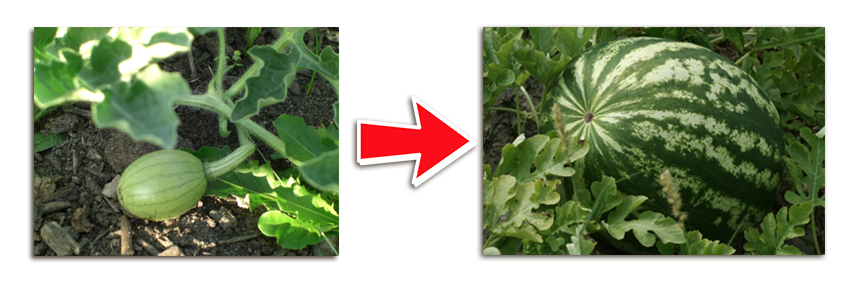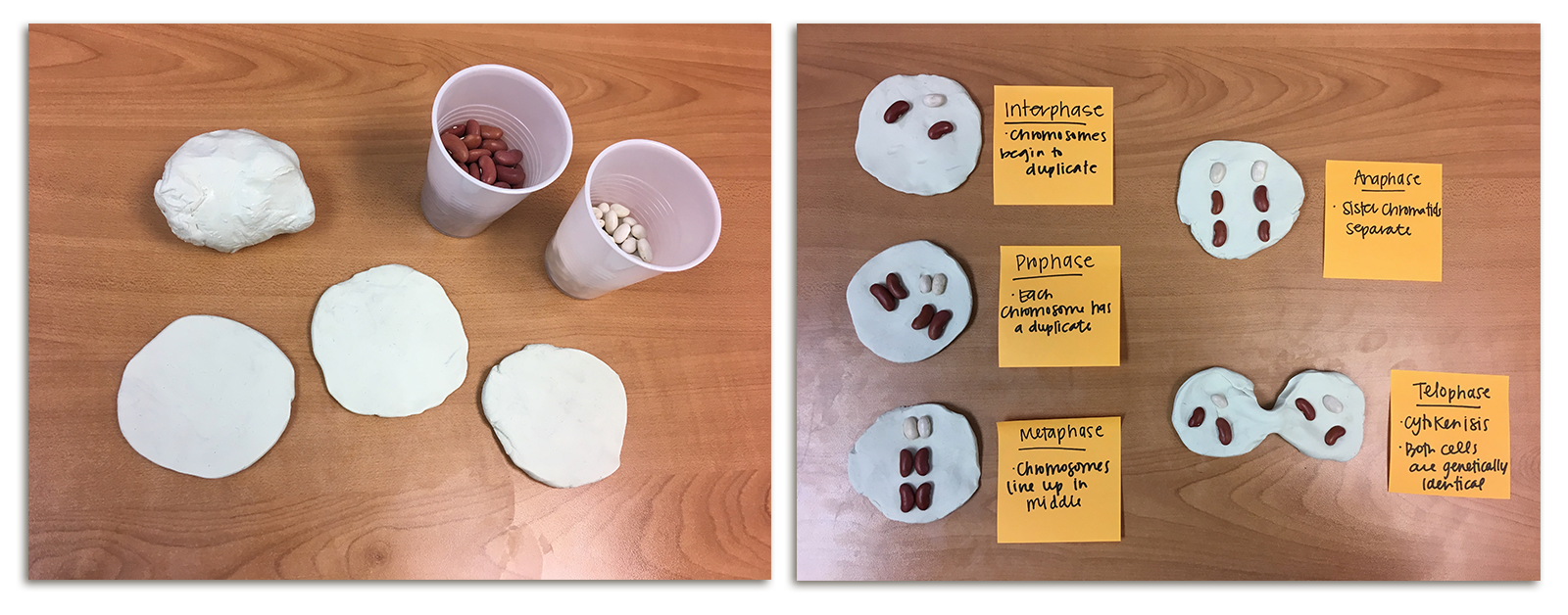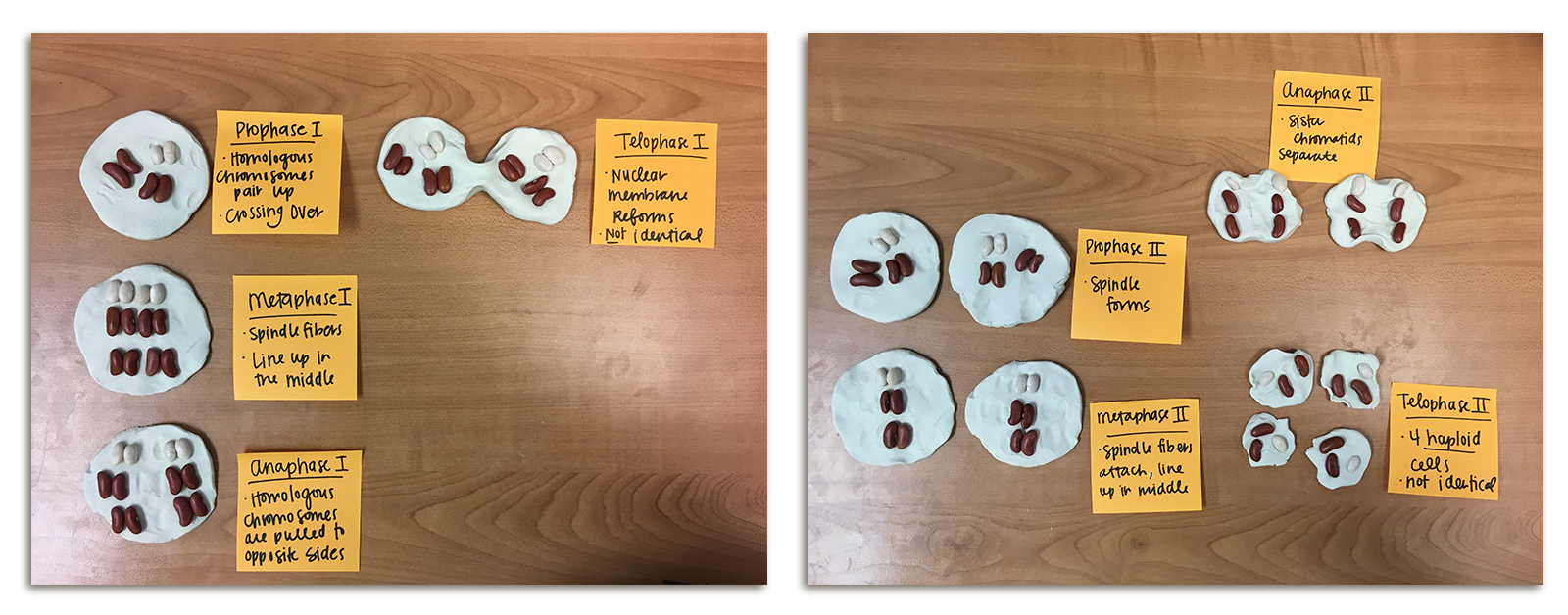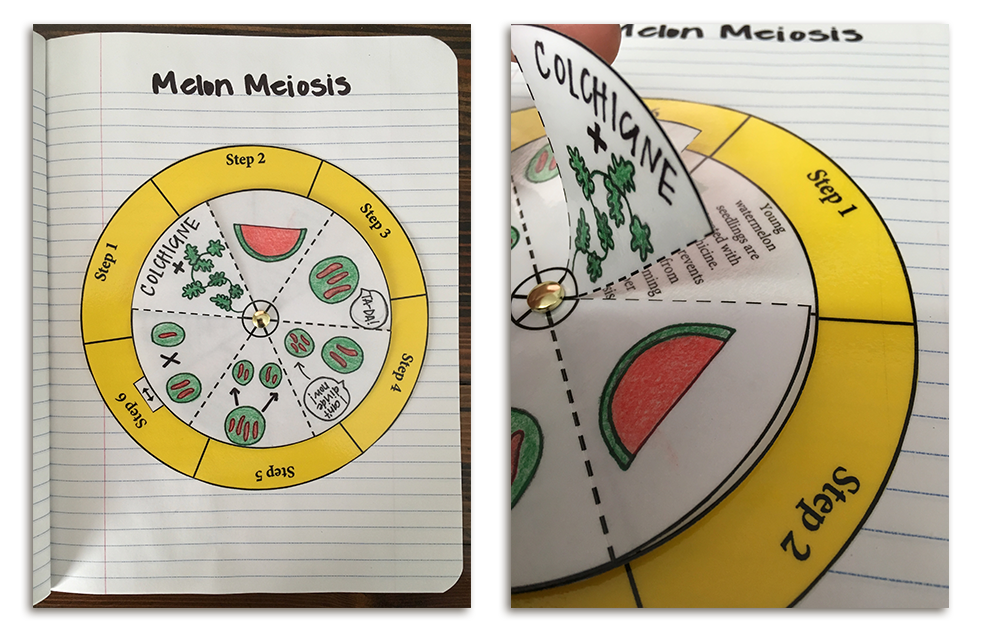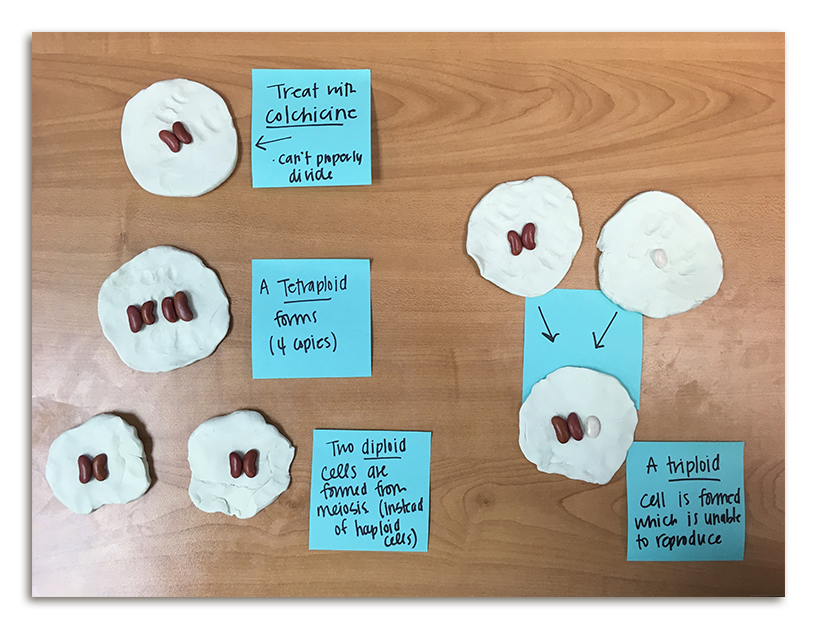Melons, Mitosis, and Meiosis
Students apply the steps of mitosis and meiosis to learn about the production of both seeded and seedless watermelon. Students will learn about the discovery of colchicine, which made seedless watermelon possible and use modeling clay and beans to model meiosis and mitosis.

Background
Lesson Activities
Recommended Companion Resources
Credits
Author
Andrea Gardner and Bekka Israelsen | Utah Agriculture in the Classroom and National Center for Agricultural Literacy (NCAL)
Acknowledgements
This lesson was adapted from the lesson, Melon Meiosis, written by Oklahoma Agriculture in the Classroom
Standards
Indiana Content Area Standards
-
English Language Arts.Grade 9-10.RV.1
Acquire and accurately use academic and content-specific words and phrases at the college and career readiness level; demonstrate independence in gathering vocabulary knowledge when considering a word or phrase important to comprehension or expression.
- Vocabulary Building.9-10.RV.2.1: Use context to determine or clarify the meaning of words and phrases.
- Vocabulary in Literature and Nonfiction Texts.9-10.RV.3.2: Determine the meaning of words and phrases as they are used in a nonfiction text, including figurative, connotative, denotative, and technical meanings; evaluate the effectiveness of specific word choices on meaning and tone in multiple and varied contexts.
-
English Language Arts.Grade 9-10.W.1
Write routinely over a variety of time frames for a range of tasks, purposes, and audiences; apply reading standards to support analysis, reflection, and research by drawing evidence from literature and nonfiction texts.
- Writing Genres: Argumentative, Informative and Narrative.9-10.W.3.2: Write informative compositions on a variety of topics that a. Introduce a topic; organize complex ideas, concepts, and information to make important connections and distinctions b. Developthetopicutilizingcrediblesourceswithrelevant,andsufficientfacts,extendeddefinitions,concrete details, quotations, or other information and examples appropriate to the audiences knowledge of the topic. c. Use appropriate transitions to link the major sections of the text, create cohesion, and clarify the relationships among complex ideas and concepts. d. Choose language and content-specific vocabulary that express ideas precisely and concisely to manage the complexity of the topic, recognizing and eliminating wordiness and redundancy. e. Establishandmaintainastyleappropriatetothepurposeandaudience. f. Provide a concluding statement or section that follows from and supports the information or explanation presented (e.g., articulating implications or the significance of the topic).
- Writing Genres: Argumentative, Informative and Narrative.9-10.W.3.3: Write narrative compositions in a variety of forms that a. Engage and orient the reader by setting out a problem, situation, or observation, establishing one or multiple point(s) of view, and introducing a narrator and/or characters. b. Createasmoothprogressionofexperiencesorevents. c. Use narrative techniques, such as dialogue, pacing, description, reflection, and multiple plotlines to develop experiences, events, and/or characters. d. Use a variety of techniques to sequence events so that they build on one another to create a coherent whole. e. Use precise words and phrases, telling details, and sensory language to convey a vivid picture of the experiences, events, setting, and/or characters. f. Provide an ending that follows from and reflects on what is experienced, observed, or resolved over the course of the narrative.
-
English Language Arts.Grade 9-10.SL.1
Listen actively and adjust the use of spoken language (e.g., conventions, style, vocabulary) to communicate effectively with a variety of audiences and for different purposes.
- Comprehension.9-10.SL.3.1: Analyze multiple sources of information presented in diverse media and formats while evaluating the credibility and accuracy of each source.
- Discussion and Collaboration.9-10.SL.2.1: Initiate and participate effectively in a range of collaborative discussions on grade-appropriate topics, texts, and issues, building on others ideas and expressing personal ideas clearly and persuasively.
- Presentation of Knowledge and Ideas.9-10.SL.4.2: Create engaging presentations that make strategic and creative use of digital media (e.g., textual, graphical, audio, visual, and interactive elements) to enhance audience understanding of findings, reasoning, and evidence.
-
English Language Arts.Grade 11-12.RV.1
Acquire and accurately use academic and content-specific words and phrases at the college and career readiness level; demonstrate independence in gathering vocabulary knowledge when considering a word or phrase important to comprehension or expression.
- Vocabulary Building.11-12.RV.2.1: Use context to determine or clarify the meaning of words and phrases.
- Vocabulary in Literature and Nonfiction Texts.11-12.RV.3.2: Determine the meaning of words and phrases as they are used in a nonfiction text, including figurative, connotative, denotative, and technical meanings; evaluate the cumulative impact of how an author uses and refines the meaning of a key term or terms over the course of a text.
-
English Language Arts.Grade 11-12.W.1
Write routinely over a variety of time frames for a range of tasks, purposes, and audiences; apply reading standards to support analysis, reflection, and research by drawing evidence from literature and nonfiction texts.
- Writing Genres: Argumentative, Informative, and Narrative.11-12.W.3.2: Write informative compositions on a variety of topics that a. Introduce a topic; organize complex ideas, concepts, and information so that each new element builds on that which precedes it to create a unified whole;include formatting(e.g., headings), graphics (e.g.,figures,tables),and multimedia when useful to aiding comprehension. b. Utilizing credible sources, develop the topic thoroughly by selecting the most significant and relevant facts, extended definitions, concrete details, quotations, or other information and examples appropriate to the audiences knowledge of the topic c. Use appropriate and varied transitions and syntax to link the major sections of the text,create cohesion, and clarify the relationships among complex ideas and concepts. d. Choose language, content- specific vocabulary, and techniques to manage the complexity of the topic, recognizing and eliminating wordiness and redundancy. e. Establishandmaintainastyleappropriatetothepurposeandaudience. f. Provide a concluding statement or section that follows from and supports the information or explanation presented (e.g., articulating implications or the significance of the topic).
- Writing Genres: Argumentative, Informative, and Narrative.11-12.W.3.3: Write narrative compositions in a variety of forms that a. Engage and orient the reader by setting out a problem, situation, or observation and its significance, establishing one or multiple point(s) of view, and introducing a narrator and/or characters. b. Create a smooth progression of experiences or events. c. Use narrative techniques, such as dialogue, pacing, description, reflection, and multiple plotlines to develop experiences, events, and/or characters. d. Use a variety of techniques to sequence events so that they build on one another to create a coherent whole and build toward a particular tone and outcome(e.g.,a sense of mystery,suspense,growth,or resolution). e. Use precise words and phrases,telling details,and sensory language to convey a vivid picture of the experiences,events,setting, and/or characters. f. Provide an ending that follows from and reflects on what is experienced, observed, or resolved over the course of the narrative.
-
English Language Arts.Grade 11-12.SL.1
Listen actively and adjust the use of spoken language (e.g., conventions, style, vocabulary) to communicate effectively with a variety of audiences and for different purposes.
- Comprehension.11-12.SL.3.1: Synthesize multiple sources of information presented in diverse media and formats in order to make informed decisions and solve problems, evaluating the credibility and accuracy of each source and accounting for any discrepancies among the data.
- Discussion and Collaboration.11-12.SL.2.1: Initiate and engage in a range of collaborative discussions on grade-appropriate topics, texts, and issues, building on others ideas and expressing personal ideas clearly and persuasively.
- Presentation of Knowledge and Ideas.11-12.SL.4.2: Create engaging presentations that make strategic and creative use of digital media (e.g., textual, graphical, audio, visual, and interactive elements) to add interest and enhance audience understanding of findings, reasoning, and evidence.
